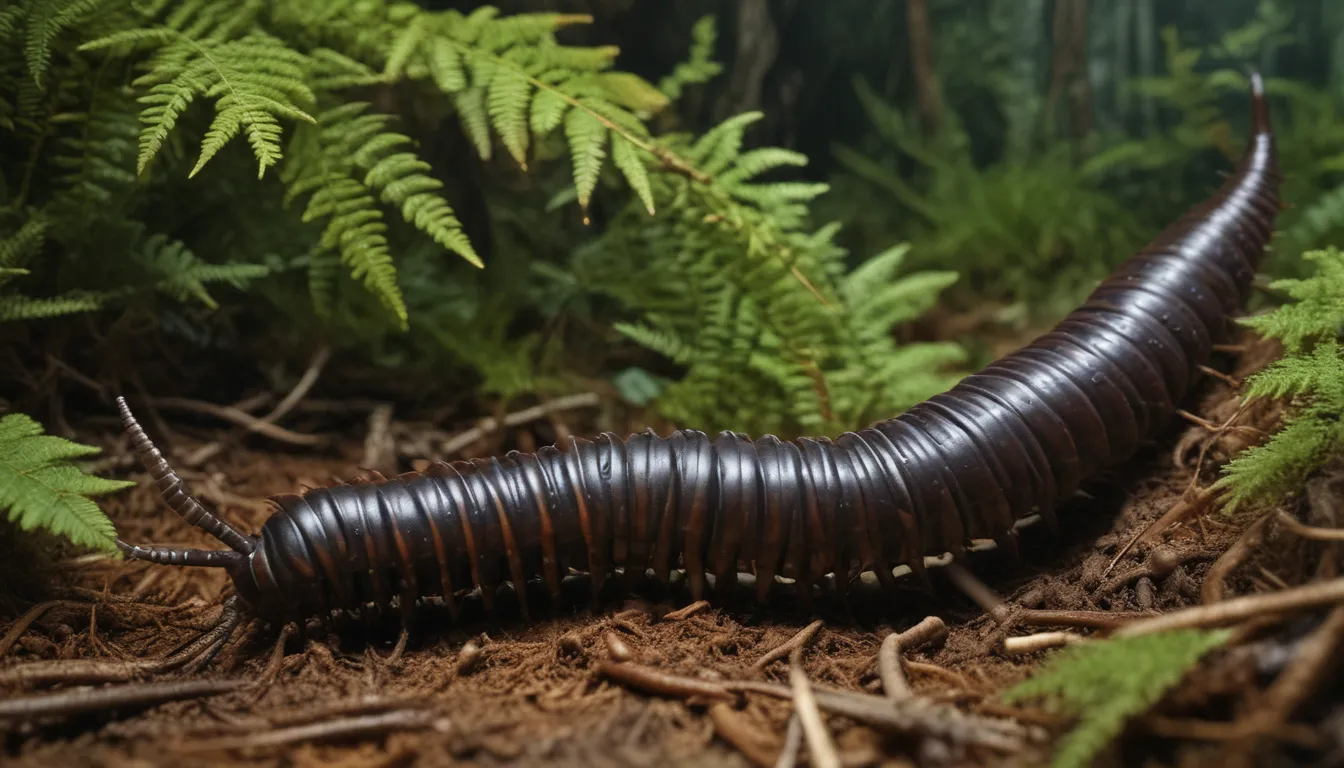The pictures we use in our articles might not show exactly what the words say. We choose these pictures to make you interested in reading more. The pictures work together with the words but don’t take their place. The words still tell you the important facts.
Millipedes are enchanting creatures that have captivated the interest of children and adults alike with their multitude of legs and unique attributes. Belonging to the class of arthropods, these creatures boast distinctive cylindrical bodies, segmented exoskeletons, and, of course, an abundance of legs. While their appearance may seem daunting, millipedes are generally harmless and even beneficial to the environment. In this article, we will delve into 11 enthralling millipede facts that are sure to spark the curiosity of kids and provide them with valuable insights into these intriguing beings. From their impressive leg count to their diverse habitats, millipedes offer a goldmine of captivating information that will leave children eager to discover more about these fascinating creatures. So, let us embark on a journey to unravel the mysteries of the millipede world!
Millipedes: Nature’s Leggy Wonders
- Millipedes have around 30-400 legs: Despite their name suggesting a thousand legs, millipedes actually boast between 30 to 400 legs. Each segment of their body houses two pairs of legs, contributing to their distinctive appearance and fascinating locomotion.
- Millipedes are not insects, but arthropods: While often mistaken for insects, millipedes belong to a separate group of arthropods known as myriapods, which also include centipedes. Unlike insects with three body segments, millipedes have numerous body segments, each bearing a pair of legs.
The Vital Role of Millipedes in Ecosystem Balance
Nature has bestowed millipedes with a crucial task in maintaining ecosystem equilibrium:
- Millipedes play an important role in the ecosystem: These unassuming creatures are essential contributors to ecosystem health by aiding in the decomposition process. They break down dead plant material, facilitating the recycling of nutrients back into the soil and bolstering the fertility of the environment.
The Intriguing World of Millipede Defense Mechanisms
Discover the fascinating defense strategies of millipedes that add to their allure:
- Some millipedes produce toxic chemicals for defense: When threatened, certain millipede species unleash toxic chemicals as a defense mechanism. While harmless to humans, these substances serve as a deterrent to predators with their pungent odor and potential irritant or poisonous properties.
Diving into the Nocturnal Lives of Millipedes
Explore the hidden world of millipedes, shrouded in darkness and mystery:
- Millipedes are primarily nocturnal creatures: Preferring the cover of darkness, millipedes emerge at night to scavenge for food in dark and moist habitats. Their diet consists mainly of decaying plant matter, fungi, and organic detritus.
Unveiling the Longevity and Regenerative Abilities of Millipedes
Peer into the secrets of millipede longevity and regenerative prowess:
- Some millipedes can live for several years: While longevity varies among species, certain millipedes can survive for up to a decade or longer in optimal conditions. Ensuring consistent access to food, moisture, and suitable habitats is key to their extended lifespan.
- Millipedes have a remarkable ability to regenerate: Through the process of autotomy, millipedes can regrow lost legs or segments, allowing them to shed damaged or captured body parts to evade danger.
Exploring the Rich Diversity of Millipedes
Delve into the diverse world of millipedes, featuring over 12,000 known species:
- There are over 12,000 known species of millipedes: Millipedes exhibit remarkable diversity with a vast array of species inhabiting various regions worldwide. Varying in size, color, and habitat preferences, millipedes showcase the beauty of nature's intricate tapestry.
The Enigmatic Dance of Millipede Mating
Witness the captivating courtship ritual of millipedes that adds a touch of romance to their mysterious world:
- Millipedes have a unique way of mating: Millipedes engage in an intricate courtship dance, where male and female counterparts intertwine their bodies and exchange sperm packets. Following mating, the female lays eggs, which hatch into young millipedes under her watchful eye.
Embracing the Moist Environments Preferred by Millipedes
Unveil the habitats coveted by millipedes for their survival and thriving existence:
- Millipedes prefer moist environments: Thriving in damp locales such as forests, rainforests, and under logs or rocks, millipedes depend on moisture to prevent desiccation. Breathing through tiny pores called spiracles necessitates a humid environment for their well-being.
Dispelling Myths: The Harmlessness of Millipedes Towards Humans
Reassure and educate on the benign nature of millipedes when interacting with humans:
- Millipedes are harmless to humans: Despite their formidable appearance and defensive measures, millipedes pose no threat to humans. Unlike biting or stinging insects, millipedes do not transmit diseases and only cause minor irritation upon skin contact.
Conclusion: A Marvelous Millipede Adventure
In conclusion, the world of millipedes is a treasure trove of marvels waiting to be explored and appreciated. From their fascinating anatomy to their invaluable ecological contributions, millipedes stand as testament to the wonders of the natural world. Encountering a millipede can spark wonder and curiosity, inviting children to delve deeper into their mesmerizing realm. So, the next time you encounter a millipede, take a moment to marvel at its unique adaptations and recall the captivating facts you've embraced!
FAQs: Satisfying Curiosity with Informative Answers
Embrace the opportunity to quell curiosity and expand knowledge with insightful responses to frequently asked questions:
- How many legs does a millipede have? Millipedes typically possess between 30 to 400 legs, dispelling the myth of a thousand legs associated with their name.
- Are millipedes harmful to humans? Millipedes pose no serious harm to humans, with their defensive secretions causing minimal skin irritation.
- What do millipedes eat? Millipedes predominantly feed on dead plant material and decaying organic matter as detritivores.
- Where do millipedes live? Millipedes inhabit a variety of environments, including forests, gardens, and moist areas beneath rocks and logs.
- How long do millipedes live? The lifespan of millipedes varies among species, with some surviving only a few years and others exceeding a decade.
- Do millipedes have any predators? Millipedes face natural predators such as birds, small mammals, centipedes, and spiders within the ecosystem.
- Can millipedes regrow their legs? Millipedes exhibit the remarkable ability to regenerate lost legs through autotomy, aiding in survival and defense mechanisms.
Embrace the Wonder of the Millipede World Together
In our commitment to delivering engaging and enlightening content, we celebrate the diversity and richness of natural marvels such as millipedes. Each fact shared is a testament to the collective knowledge and passion that fuels our exploration of the world's wonders. Trust in the authenticity and reliability of our content as we embark on a journey of discovery and learning together. Join us in marveling at the intricacies of the millipede world and fostering a love for the fascinating creatures that inhabit our planet.






